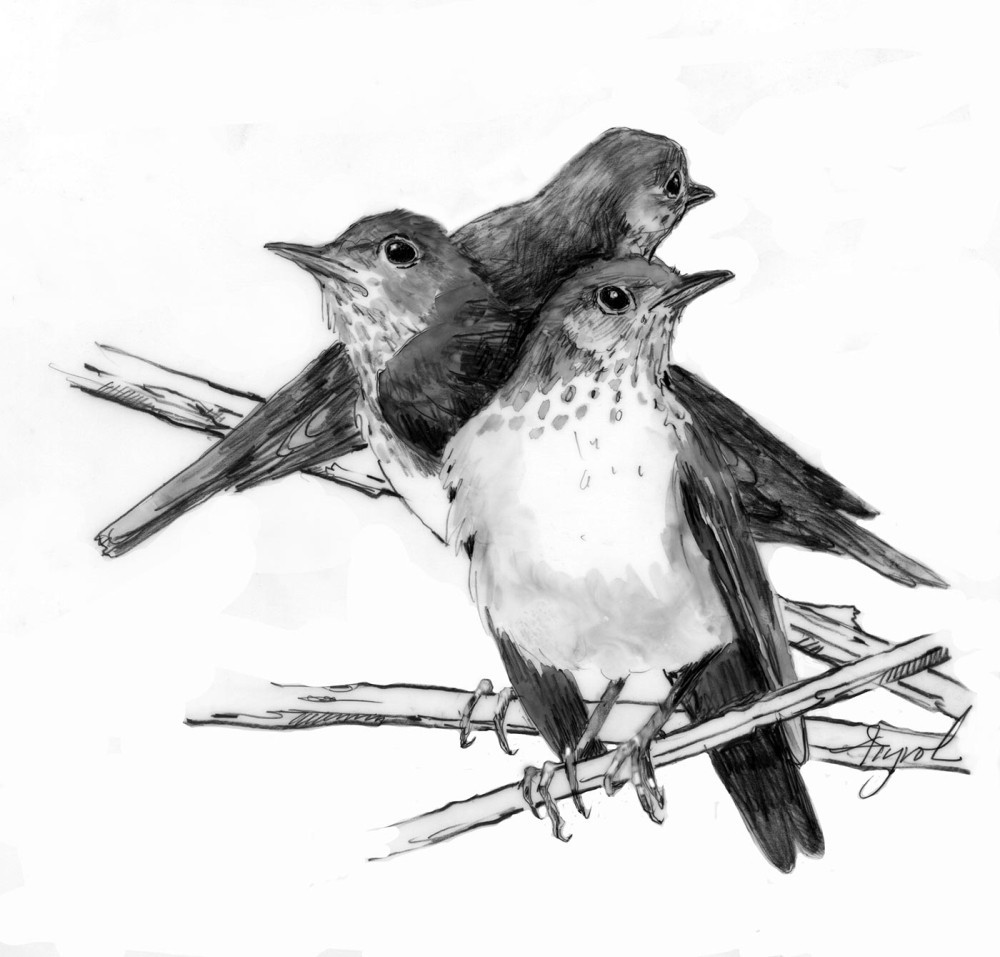
If you take a walk through a thick, broadleaf forest on a cool summer morning, you might recognize the cascading, metallic song of a thrush called a veery. It is an ethereal sound that echoes through the understory, like the ring of a haunted cell phone. You might even see a veery, with its russet back and upright stance, scampering through the underbrush as it forages for insects and other invertebrates.
Chances are, though, otherworldly songs and fleeting glimpses are the closest you will get to these skulky thrushes. Veeries tend to seclude themselves in the dense, scrubby vegetation, a habitat choice that makes veery nesting behavior hard to study.
When ornithologist Matthew Halley was a master’s student at the University of Delaware, he focused his research on a population of veeries in White Creek State Park, Delaware, that his advisor, Christopher Heckscher, has been studying since 1998. At the time, Halley assumed veeries bred like most songbirds: one female and one male raising their young together. What he found, however, is that nearly half of all veery nestlings are raised by their mother and two or more males. These males seem to be related to each other, and they may also help to raise their brother’s, uncle’s, or father’s children.
Cooperative parental care is rare in birds, especially in extremely long-distance migrants. The veeries that breed in the Northeast travel 5,000 miles from their wintering grounds in central Brazil each spring. Many of them find their way back to the same patch of woods each year, ready to raise the next generation – often with the help of relatives. In a sense, veeries act like royal houses, establishing family dynasties in their woods to ensure their bloodline’s survival.
This communal parenting system has clear advantages for females. If one of the males – even the biological father – abandons the nest, the other bonded males feed the babies and keep them healthy. To increase their young’s chances of survival, female veeries will mate with multiple males and establish a bond with each. In one instance Halley observed, a female veery even mated with a male wood thrush. That thrush was not the father to any of her nestlings, but he nonetheless fed them day after day. “That wood thrush was a feeder,” Halley said. “He was bringing in more food than the male veeries.”
For the males, this behavior, at first glimpse, seems like a lose-lose: they have to attend, feed, and guard multiple nests at once, and risk wasting their energy feeding nestlings that aren’t theirs. But these birds are part of a family, and if their family persists, some of their genes do as well. “If I can help [my brother’s] offspring survive and reproduce,” Halley said, “I’m indirectly helping a rather high percentage of my genes to pass on to the next generation.”
These genetic benefits apply to females as well. While many other songbird species build their nests away from other nests, veeries tend to nest close to each other. The females build the nests on or near the ground, and other nearby nests often belong to sisters or aunt-niece pairs. Sometimes these nests are also guarded by the same males, creating what Halley calls a “cooperative nest defense cluster.” The closely related females leave each other alone, while the males are able to more efficiently guard multiple nests in close proximity.
While this cooperative behavior is rare among migratory songbirds, it seems to be somewhat common in some other thrush species. Bicknell’s thrush, a close relative of the veery that breeds in the high-altitude forests in Vermont and New Hampshire, has a similar breeding system. The sedentary slaty-backed nightingale-thrush, which lives in Central and South America, takes cooperative parenting to the extreme. Researchers observed one nest being fed by six birds – four males and two females. Other relatives of the veery, including hermit thrushes, may very well practice a similar mating system. But, for now at least, these unique ways of life are as hidden by the dense forest understory as the birds themselves.


Discussion *